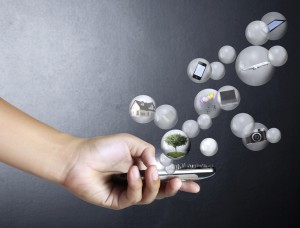 The young, modern CEO has a wide variety of useful (and not-so-useful) gadgets to choose from on the market. It can be as difficult to differentiate one emerging technology from the other as it is to identify the relevant from the unnecessary. Learning curves can be steep, and time is money – who wants to invest either in a gadget that will be obsolete in a year or two, or is worthless now?
The young, modern CEO has a wide variety of useful (and not-so-useful) gadgets to choose from on the market. It can be as difficult to differentiate one emerging technology from the other as it is to identify the relevant from the unnecessary. Learning curves can be steep, and time is money – who wants to invest either in a gadget that will be obsolete in a year or two, or is worthless now?
Smartphones
Check out this infographic on CEO gadgets. Smartphones, ultrabooks and/or tablets are used by four out of five current CEOs. The top tool-slash-gadget that provides you with freedom from your desk while still keeping you connected is the smartphone. It lets you access documents, read email, attend video conferences, schedule meetings and, of course, provides Internet access.
Accessorize, Accessorize, Accessorize
Smartphone accessories are often wise investments for CEOs, as their cost is often worth the technical challenges they help you overcome. Battery packs like the $100 Mophie Juice Pack hold enough juice to recharge phones, tablets or other USB-charged devices while you’re on the go, and if you’ve ever been on an important call or conducting important business online with your battery running low, you know how important these can be. Far more versatile and useful than a spare proprietary battery, this belongs in every CEO’s briefcase.
When looking at bluetooth headsets, don’t sacrifice quality for a lower price tag here, either. Nothing ruins a business deal quicker than a garbled phone call.
Cases for phones run the gamut in appearance and function. Masquerade cases like the BookBook not only protect the phone (or laptop, or tablet) inside them, but in the case of the phone-sized cover, adds essential wallet functions as well. Differentiating homogeneous hardware with cases and accessories not only eases confusion about what belongs to whom, but adds a bit of personality, too.
Tablets and Laptops
Tablets have much of the same function as a smartphone, of course, but with far better screen real estate. Both provide access to a number of top apps for business leaders but as you know, working on presentations and reading documents isn’t exactly convenient on a smartphone; conversely, most people don’t lug their tablet around with them. In a Google study on the devices people use to search, Google found that smartphones are a lot more “mobile” than tablets; consumers mainly use tablets in their homes, except for business travel and vacations. Not so with smartphones; people have their phones with them at all times. Of course, tablets can replace laptops for many functions that a smartphone cannot, but then what? No keyboard. Keep these trade-offs in mind when you’re planning these purchases.
Laptops and notebooks are being supplanted by ultrabooks. Unrivaled in power and capability, they’re also smaller and lighter than ever; the MacBook Air has been the smallest and lightest for years. Windows 8 has brought touchscreens to ultrabooks, but not with critical acclaim.
What About Apple?
The Apple iPhone 5 and iPad are popular among CEOs and consumers alike, due in part to their early arrival on the market, which gave Apple an unparalleled user base and share of the app market. Android phones and tablets are popular and, arguably, even more feature-rich than Apple products. However, picking out an Android phone can be challenging, due to the variety of manufacturers and specifications. Some safe bets include the Nexus 4, the Samsung Galaxy 3, Note 2, HTC 1 or Motorola Maxx. Blackberries and phones running Windows have caused some excitement in the business world, as the focus has been less on gaming and more on social and business communications.
Some Like It Hot
Having a personal 3G/4G hotspot can be a lifesaver for those times when Wi-Fi isn’t available, or when your phone only gets signal when you’re next to a window. These hotspots are cheap to buy and to use – Verizon, AT&T and Sprint all offer these small, battery-powered devices. You can get get five to eight devices online at once. Monthly access prices run from $10 to $30.
Finally, the buzz at this month’s SXSW was all about Google Glass. The jury’s still out on these – what do you think? How soon before young CEOs take to wearing this fantastic futuristic.
Curtis Walker is from Las Vegas, Nv. He has been working as a photographer and writer since getting his start in 2006 with Jalopnik.com. In addition to this, he pursues his passions as an artist, actor, father and entrepreneur.
Image Credit: Shutterstock.com
